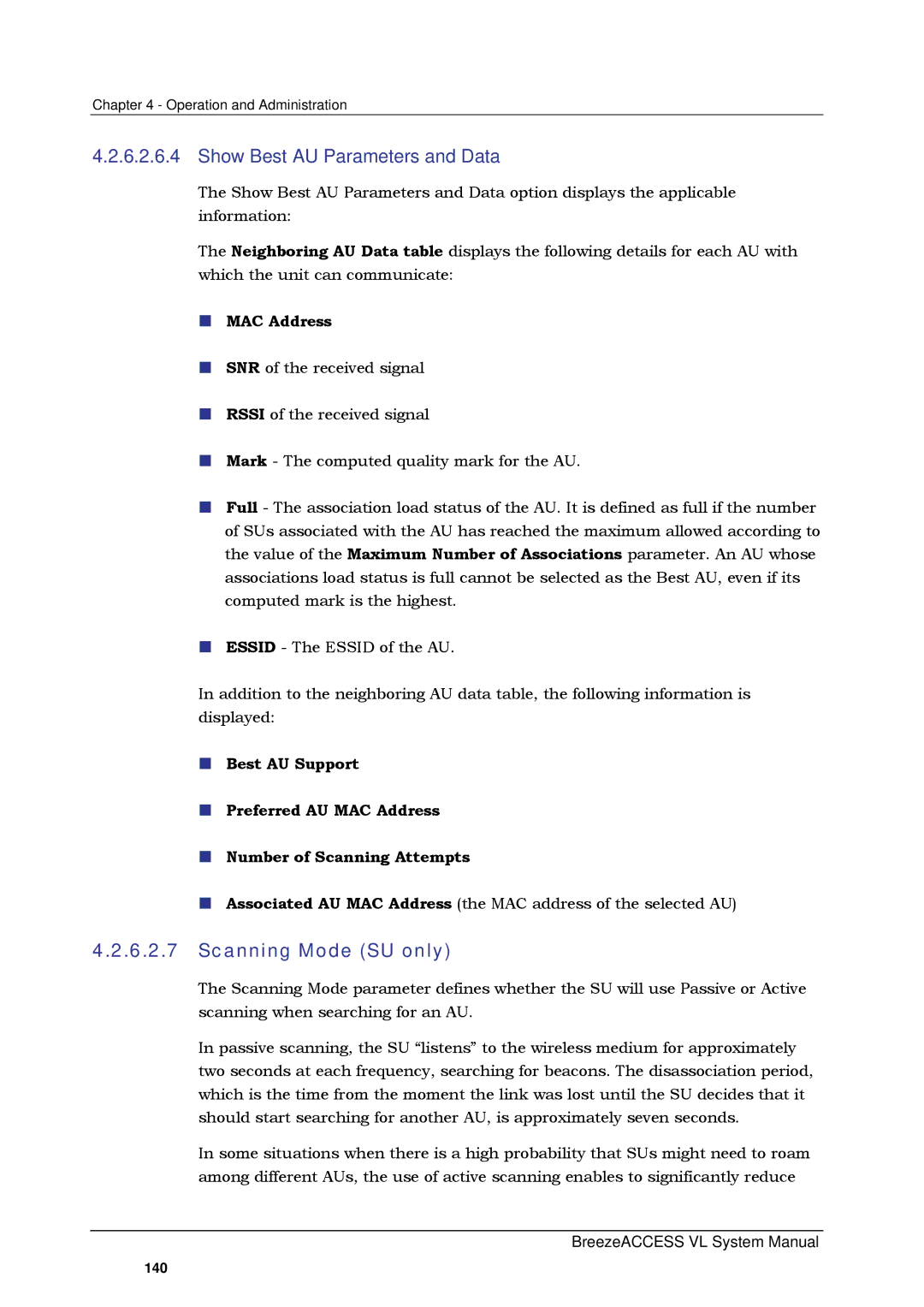
Chapter 4 - Operation and Administration
4.2.6.2.6.4 Show Best AU Parameters and Data
The Show Best AU Parameters and Data option displays the applicable information:
The Neighboring AU Data table displays the following details for each AU with which the unit can communicate:
MAC Address
SNR of the received signal
RSSI of the received signal
Mark - The computed quality mark for the AU.
Full - The association load status of the AU. It is defined as full if the number of SUs associated with the AU has reached the maximum allowed according to the value of the Maximum Number of Associations parameter. An AU whose associations load status is full cannot be selected as the Best AU, even if its computed mark is the highest.
ESSID - The ESSID of the AU.
In addition to the neighboring AU data table, the following information is displayed:
Best AU Support
Preferred AU MAC Address
Number of Scanning Attempts
Associated AU MAC Address (the MAC address of the selected AU)
4.2.6.2.7Scanning Mode (SU only)
The Scanning Mode parameter defines whether the SU will use Passive or Active scanning when searching for an AU.
In passive scanning, the SU “listens” to the wireless medium for approximately two seconds at each frequency, searching for beacons. The disassociation period, which is the time from the moment the link was lost until the SU decides that it should start searching for another AU, is approximately seven seconds.
In some situations when there is a high probability that SUs might need to roam among different AUs, the use of active scanning enables to significantly reduce
BreezeACCESS VL System Manual
140
